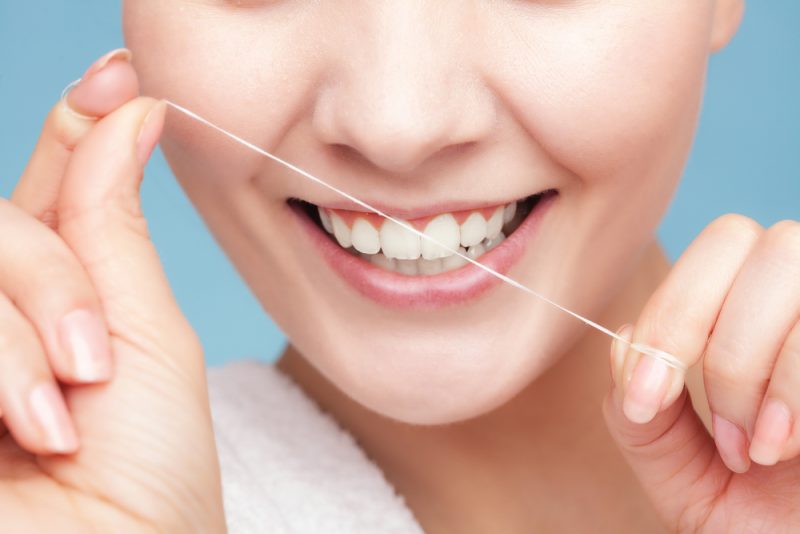An essential part of taking care of your teeth is regular flossing. Still only 4 out of 10 Americans floss daily. The American Dental Association recommends cleaning between your teeth once a day. Cleaning between your teeth helps remove a sticky film called plaque. Plaque is not removed by brushing alone.
Plaque contains bacteria that feeds on leftover food or sugar in your mouth. When that happens, it releases an acid that can eat away at the outer shell of your teeth and cause cavities. Cleaning between your teeth removes plaque before it can harden into tartar (or calculus). Once hardened, this tartar collects along the gum line and can lead to gum disease. Once tartar forms, only your dentist can remove it.
Flossing options
There are several options for cleaning between teeth. Dental floss, dental picks, pre-threaded flosser, or tiny brushes that reach between the teeth. Water flossers can clean between teeth if you have dental work that makes flossing difficult, like braces or permanent or fixed bridges. It is best to use dental floss, rather than one of the alternatives listed above. Talk to your dentist about what types of dental care products will be most effective for you.
The Best Time to floss your Teeth?
As long as you do a thorough job, it doesn’t matter when. Pick a time of day when you can devote an extra couple of minutes to your dental care, such as, first thing in the morning or after lunch. Others might like to go to bed with a clean mouth. Even if you haven’t flossed for years, it is time to make it a habit. Plaque can hide in all the crevices in your mouth, collect below the gum line, and develop into tartar. This results in inflammation and causes bleeding gums.
Keep in mind that cleaning between your teeth should not be painful. If you do it too hard, you could damage the tissue between your teeth. If you’re too gentle, you might not be getting the food out. It’s normal to feel some discomfort when you first start, but don’t give up. This discomfort should ease within a week or two. If your pain persists, talk to your dentist.
If you’re interested in learning more about flossing, we recommend you speak with your dentist. It’s also important to continue brushing regularly and visit the dentist for a professional cleaning twice per year.

